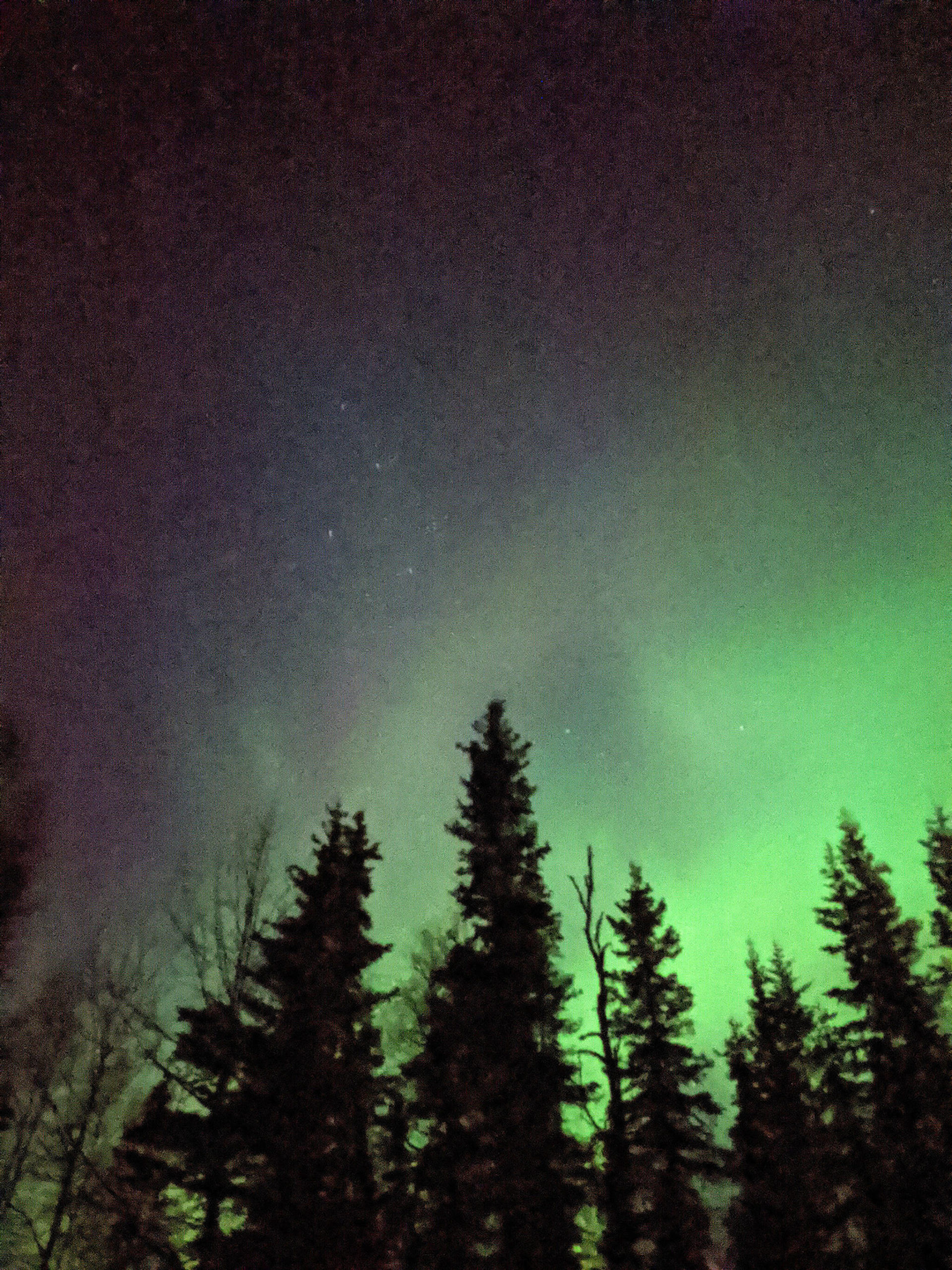There’s a good chance I may be in the minority on this one, but I love winter. Most people I know prefer summer and shoulder seasons, even so much so that a common life strategy of Alaskans is to “snowbird” or leave the state when winter hits for warmer climates.
Not me, I love it!
Sure, winter brings on its own set of challenges like exposure risks from extremely cold air and water, and of course, prolonged darkness.
But, if you’re able to get out and away from populace centers, the stark switch from what was once colorful, lush foliage is now a white, velvety smooth landscape with contrasting speckled mountainsides of trees and rock. Big fat snowflakes gently fall, taking the place of bugs and cottonwood seeds from just a few months ago.
If you’re out far enough without anyone else around, there’s something beautiful about the absolute silence of winter on a calm day. Even with all that, my most favorite part of winter is the aurora borealis!
The first time I got to see the aurora was two years ago in Fairbanks. To say it blew my mind would be severely understating the experience.
On top of Murphy Dome, I stood there soaking in the dance of colors in the night sky that I had seen in photos and videos before but could have never imagined what it’s like in person. So, while the refuge is relatively low in latitude for the best shows, I still do my best to make it out when it dips down this far.
As a biological science technician here on the refuge, and as I anticipate more of this winter’s aurora activity, it has led me to wonder if the aurora borealis interferes with wildlife’s use of magnetic navigation. When the aurora occurs, charged particles from coronal mass injections on the sun, in the form of solar wind, collide with the Earth’s magnetic field interacting with oxygen and nitrogen, creating the gorgeous show we see above us.
Although it looks like it could be another low cloud layer, the action is at an astounding altitude, at about 300,000 feet up. For reference, commercial airlines cruise between 30,000 and 40,000 feet, and only seven species of birds have ever been recorded flying 20,000 to 30,000 feet, and two over 30,000.
With the aurora being so high in the atmosphere, it couldn’t possibly interfere with wildlife’s ability to navigate via the Earth’s magnetic field, could it?
For wildlife, the ability to detect the Earth’s magnetic poles is called magnetoreception. It is fairly well known that birds use this to navigate during migrations but detecting the magnetic field is suspected to happen in a wide variety of other wildlife like whales, lobsters, fish, sea turtles, bees, bats and even some plants!
Currently, there are a few theories as to exactly how this works, but unfortunately, research has not found a perfect answer … yet. Specifically, two theories currently being studied are the “radical-pair mechanism” and the “ion cyclotron resonance” mechanism. It has also been found for salmon and other species to have magnetite molecules in bone cells.
The particle waves from an aurora way up in the atmosphere can interfere with our compasses, radios, GPS and other electronics, so why not wildlife? It just might.
It has yet to be definitively proven, but research from the International Journal of Astrobiology suggest intense aurora activity could have played a hand in the beaching of 29 sperm whales in 2016 in the North Sea. The Journal of Apicultural Research published findings of alternating magnetism, like that found with solar storms, caused disorientation in honeybees, not allowing them to find their way back to the hive.
On a subject near and dear to Alaskan’s hearts, researchers found chinook salmon to have their navigational orientation behavior altered when exposed to a strong but brief magnetic pulse. Although the physiological science of exactly how wildlife use the magnetic field or how an aurora event affects them is still unclear, it is becoming more apparent — slowly but surely — that a multitude of species are dependent on the magnetic fields.
While I observe the beauty of the aurora, as a biologist, I can’t help but wonder that an aurora event might have a more considerable impact, for a short time, on the mechanisms essential to wildlife migrations during their life cycle.
This Thanksgiving, I find myself thankful for many things, including winter, and I look forward to being able to “ooh and ahh” at more spectacular auroral events. I also can’t wait to see what further research finds in how they affect wildlife.
Jake Danner is a biological science technician for invasive vegetation on the Kenai National Wildlife Refuge. He is also involved in many aspects of wildlife projects within the biology team and has considerable field experience including fisheries. He enjoys a newfound hobby as a photographer, he takes a decent picture every now and then too. Find more Refuge Notebook articles (1999–present) at https://www.fws.gov/refuge/Kenai/community/refuge_notebook.himl.

